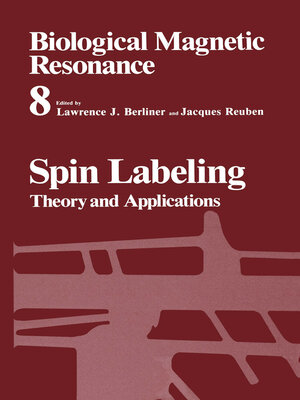Spin Labeling
ebook ∣ Theory and Applications · BIOLOGICAL MAGNETIC RESONANCE
By Lawrence J. Berliner

Sign up to save your library
With an OverDrive account, you can save your favorite libraries for at-a-glance information about availability. Find out more about OverDrive accounts.
Find this title in Libby, the library reading app by OverDrive.



Search for a digital library with this title
Title found at these libraries:
| Library Name | Distance |
|---|---|
| Loading... |
We present this special topics volume on an area which has not received thorough coverage for over 12 years. Spin Labeling: Theory and Applications represents a complete update on new theoretical aspects and applications of the spin-label method. In the "line-shape theory" sections, we are especially pleased to include an IBM-compatible diskette supplied by David Schneider and Jack Freed which contains fast, accurate, ready-to-use software for slow-motion simulations. Barney Bales discusses inhomogeneous broadening phenomena in detail. Several developments in techniques and interpretation in saturation transfer spectroscopy have appeared since the publica tion of Spin Labeling II: Theory and Applications (L. J. Berliner, ed., Academic Press, 1979). We have included an up-to-date chapter on spin-label applications by M. A. Hemminga and P. A. de Jager. By incorporating 15N and deuterium into nitroxide spin labels, several unique advantages are derived in line-shape analysis. Albert Beth and Bruce Robinson have contributed a detailed chapter on the analysis of these labels in the slow-motion regime while Jane Park and Wolfgang Trommer present the advantages for specific biochemical examples in our "applications" section. Derek Marsh's contri bution on spin-label spectral analysis may be regarded as a summary chapter which touches on several of the detailed spectral analysis methods described in the earlier chapters.







